Quick Summary:
The amount of sodium in softened water depends on your water’s hardness. For every grain of hardness removed, about 8 mg of sodium is added per liter of water. If your water is very hard, the sodium content will be higher. Most people find the added sodium level is not a health concern, but those on low-sodium diets should consult a doctor or use alternative softening methods.
Is your water leaving spots on your dishes? Maybe your skin feels dry and itchy after a shower? Hard water can be a real pain! Water softeners are a great way to tackle these problems, but you might be wondering about the sodium they add to your water. It’s a common concern, especially if you’re watching your sodium intake.
Don’t worry! We’ll break down exactly how much sodium softened water contains. We’ll also look at factors that affect sodium levels and explore some alternatives if you’re trying to cut back. By the end of this guide, you’ll know everything you need to make an informed decision about water softening.
Understanding Water Hardness and Softening
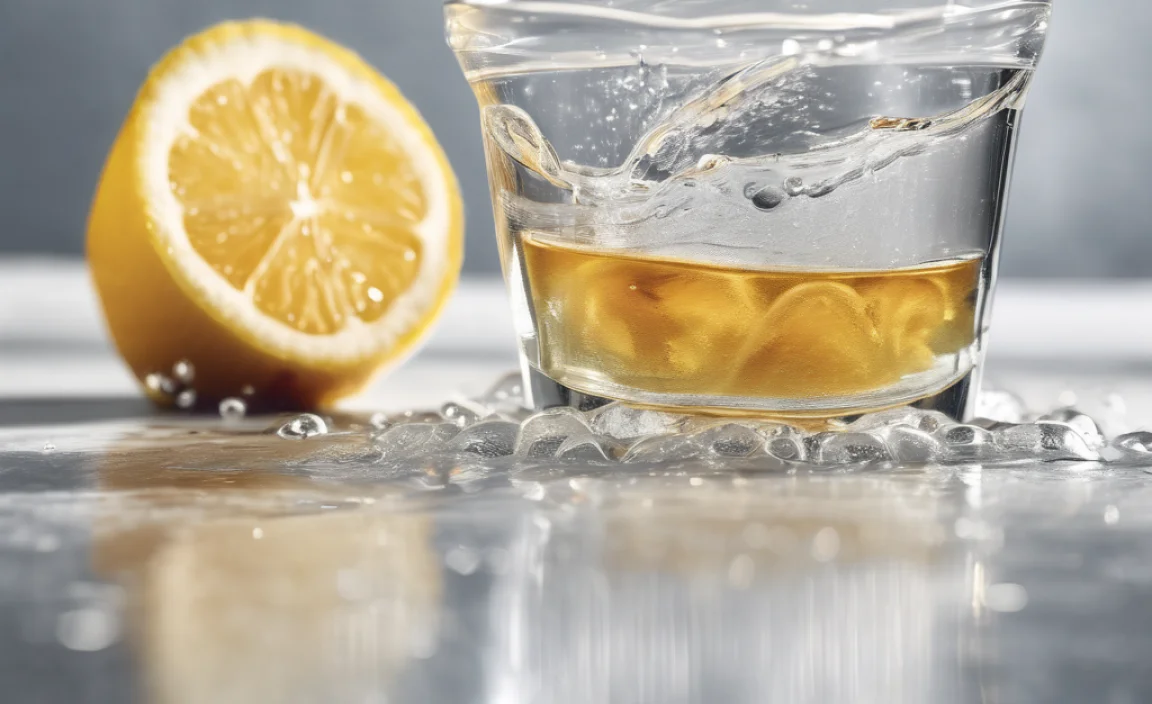
First, let’s get clear on what “hard water” really means and how water softeners work.
What is Hard Water?
Hard water contains high levels of minerals, mainly calcium and magnesium. These minerals aren’t harmful to drink, but they can cause a lot of annoying problems around the house:
- Scale buildup on faucets and showerheads
- Spots on dishes and glassware
- Dry, itchy skin and hair
- Reduced efficiency of soaps and detergents
The hardness of water is measured in grains per gallon (GPG) or parts per million (ppm). Here’s a general guideline:
| Hardness Level | Grains per Gallon (GPG) | Parts per Million (ppm) |
|---|---|---|
| Soft | Less than 1 | Less than 17.1 |
| Slightly Hard | 1 to 3.5 | 17.1 to 60 |
| Moderately Hard | 3.5 to 7 | 60 to 120 |
| Hard | 7 to 10.5 | 120 to 180 |
| Very Hard | More than 10.5 | More than 180 |
How Do Water Softeners Work?
Water softeners use a process called ion exchange to remove calcium and magnesium from your water. Here’s a simplified explanation:
- Hard water enters the softener tank.
- The water flows through a bed of resin beads. These beads are coated with sodium ions.
- As the hard water passes through the resin, the calcium and magnesium ions are attracted to the beads.
- The sodium ions are released into the water in exchange for the calcium and magnesium.
- The softened water, now containing sodium, flows into your home’s plumbing.
- Periodically, the resin beads need to be “recharged.” The softener uses a brine solution (highly concentrated salt water) to flush the calcium and magnesium off the beads and replenish them with sodium. This wastewater is then drained away.
Sodium Content in Softened Water: The Numbers
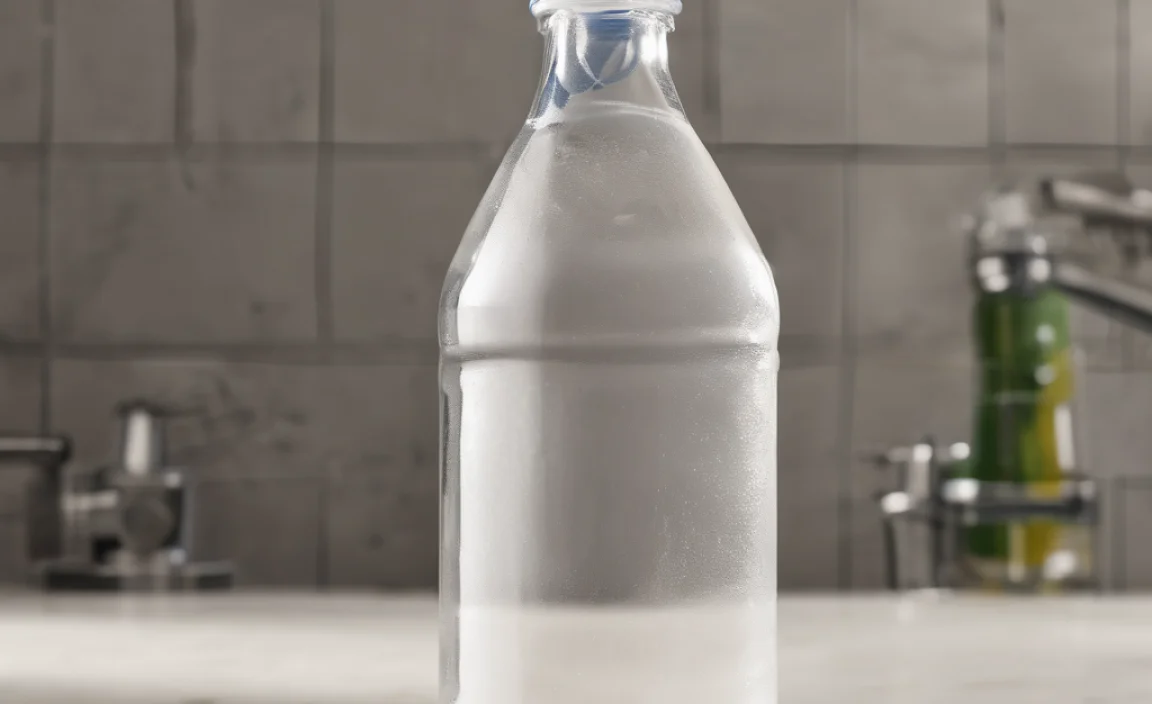
Now, let’s get to the heart of the matter: how much sodium are we talking about?
The General Rule
As a general rule, for every grain of hardness (GPG) removed from your water, approximately 8 milligrams (mg) of sodium is added per liter of water. Let’s look at an example:
- Your water has a hardness of 10 GPG.
- Your water softener removes all 10 GPG.
- The softener adds 8 mg of sodium per liter for each GPG removed, so it adds 8 mg/L * 10 GPG = 80 mg of sodium per liter.
To put that into perspective, a liter is a little more than a quart. That means if you drink a quart of fully softened water, you’d be getting around 80 mg of sodium in this example.
Factors Affecting Sodium Levels
Several factors can influence the amount of sodium in your softened water:
- Water Hardness: The harder your water is to begin with, the more sodium will be added during the softening process.
- Softener Settings: Some water softeners allow you to adjust the level of softening. If you don’t need your water completely “soft,” you can reduce the amount of sodium added.
- Salt Type: The type of salt used in your water softener (rock salt, solar salt, or evaporated salt) doesn’t significantly affect the amount of sodium added to the water. However, using high-purity salt can help prevent other issues with your softener.
- Bypass Valve: Most water softeners have a bypass valve. This allows you to bypass the softener and use unsoftened water for certain purposes, like watering your garden.
Comparing Sodium in Softened Water to Other Sources
It’s important to consider the sodium in softened water in the context of your overall sodium intake. The Dietary Guidelines for Americans recommend limiting sodium intake to less than 2,300 mg per day for most adults. Here’s a comparison to common foods:
| Food | Serving Size | Approximate Sodium Content (mg) |
|---|---|---|
| Softened Water (1 liter, hardness of 10 GPG) | 1 liter | 80 |
| Canned Soup | 1 cup | 700-1500 |
| Processed Lunch Meat | 2 ounces | 400-800 |
| Potato Chips | 1 ounce | 150-200 |
| Bread | 1 slice | 100-200 |
As you can see, the sodium in softened water is often much lower than in many processed foods. For most people, the added sodium from softened water is not a major health concern.
Health Considerations and Alternatives
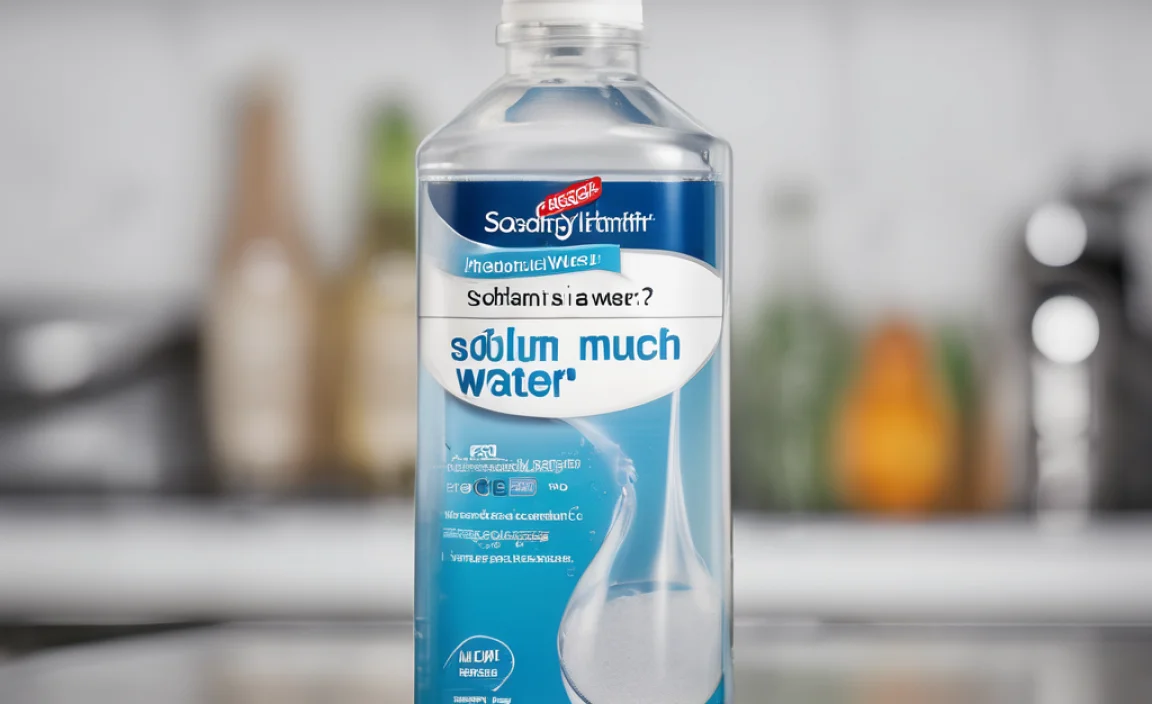
While the sodium in softened water is generally not a problem, some people need to be more careful about their sodium intake.
Who Should Be Concerned?
Individuals with the following conditions should consult their doctor or a registered dietitian about the potential impact of softened water on their sodium intake:
- High blood pressure
- Heart disease
- Kidney disease
- Those on a low-sodium diet
Your doctor can help you determine if the added sodium is a concern and recommend appropriate steps.
Alternatives to Traditional Water Softeners
If you need to reduce your sodium intake, here are some alternatives to traditional salt-based water softeners:
- Potassium Chloride Softeners: Instead of using sodium chloride (salt), these softeners use potassium chloride. Potassium is an essential nutrient, and it doesn’t pose the same health concerns as sodium for most people. However, potassium chloride can be more expensive than salt.
- Salt-Free Water Conditioners: These systems don’t actually remove the minerals that cause hard water. Instead, they change the chemical structure of the minerals, preventing them from forming scale. They don’t add any sodium or potassium to the water. These are often called “water conditioners” rather than “water softeners.”
- Reverse Osmosis (RO) Systems: RO systems filter water through a semi-permeable membrane, removing a wide range of contaminants, including minerals that cause hardness. They also remove sodium. RO systems are typically installed at the point of use, such as under the kitchen sink, to provide purified drinking water.
- Water Softener Alternatives: There are a number of products marketed as water softener alternatives. These products claim to address hard water issues without using salt or potassium. However, their effectiveness can vary, so research carefully.
Other Ways to Reduce Sodium Intake
Regardless of whether you use a water softener, here are some general tips for reducing your sodium intake:
- Read food labels carefully and choose low-sodium options.
- Cook at home more often, so you can control the amount of sodium in your meals.
- Use fresh herbs and spices to flavor your food instead of salt.
- Rinse canned foods, such as beans and vegetables, to remove excess sodium.
- Limit your intake of processed foods, such as fast food, frozen meals, and salty snacks.
Testing Your Water
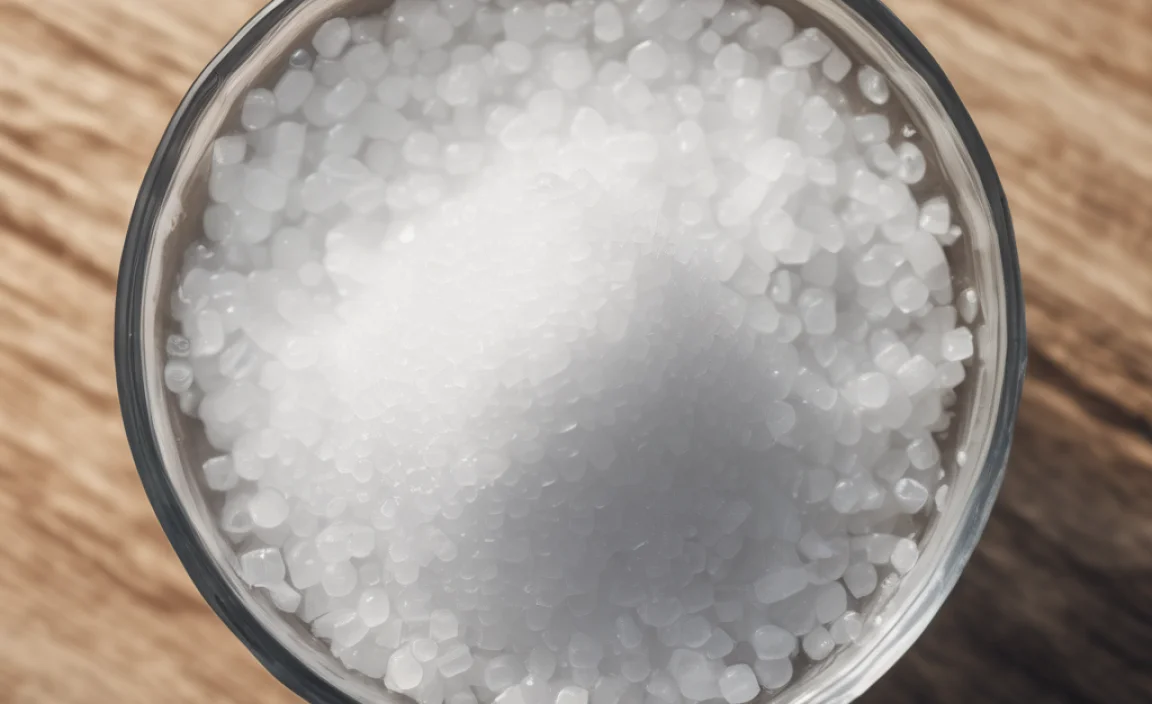
It’s a good idea to test your water regularly to monitor its hardness and sodium levels.
Testing for Hardness
You can test your water hardness using a simple home test kit, which you can purchase at most hardware stores or online. These kits typically involve dipping a test strip into your water and comparing the color change to a chart. You can also have your water professionally tested by a certified laboratory.
Many local health departments offer water testing services, and the EPA provides a list of certified labs in each state on their website.
Testing for Sodium
Testing for sodium requires a more sophisticated analysis. You’ll need to send a sample of your water to a certified laboratory. The lab can provide you with a detailed report of the sodium content in your water.
Maintaining Your Water Softener
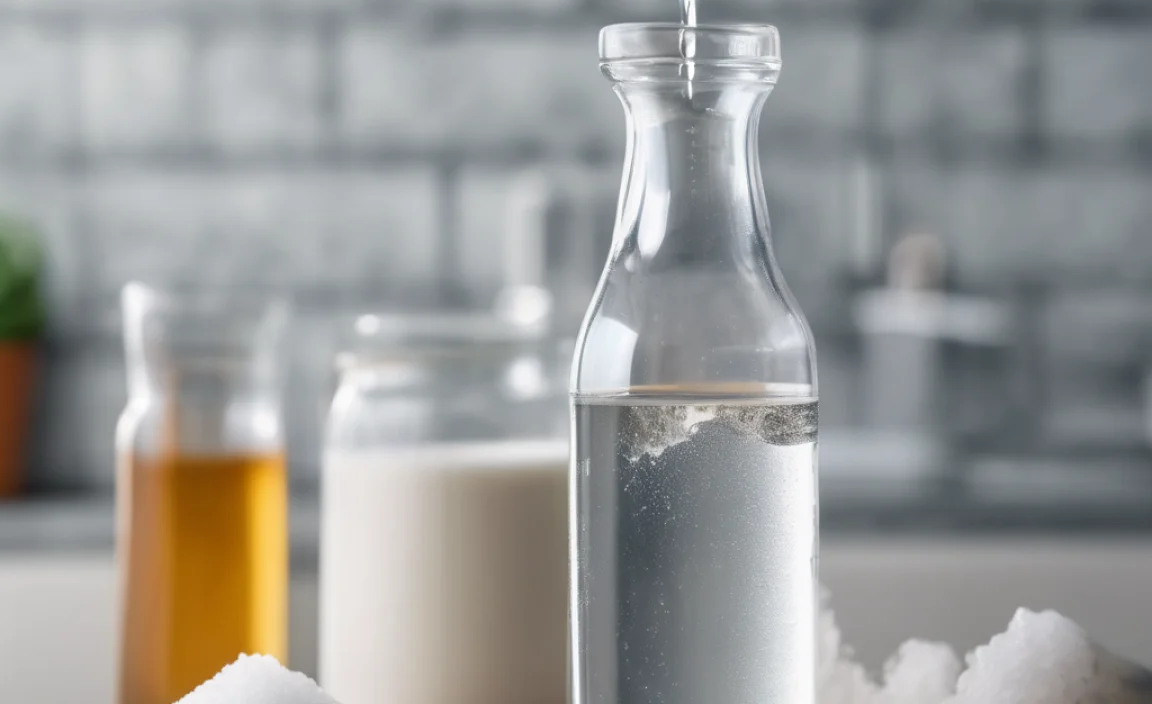
Proper maintenance is essential for ensuring your water softener works efficiently and effectively.
Regular Salt Replenishment
Check the salt level in your softener’s brine tank regularly and add salt as needed. The tank should be about one-third to one-half full. Don’t let the salt level drop too low, or the softener won’t be able to regenerate properly.
Brine Tank Cleaning
Over time, sediment and salt buildup can accumulate in the brine tank. Clean the tank every year or two to ensure optimal performance. To clean the tank:
- Turn off the water supply to the softener and bypass the unit.
- Remove any remaining salt from the tank.
- Scoop out any sediment or debris.
- Wash the tank with warm, soapy water and rinse thoroughly.
- Replace the salt and turn the water supply back on.
Resin Bed Cleaning
The resin beads in your water softener can become fouled with iron, sediment, and other contaminants. Use a resin cleaner periodically to remove these deposits and keep the resin working effectively. Follow the manufacturer’s instructions for using the resin cleaner.
Professional Servicing
Have your water softener professionally serviced every few years to ensure it’s in good working order. A qualified technician can inspect the unit, clean or replace parts as needed, and adjust the settings for optimal performance.
FAQ About Sodium in Softened Water
Will softened water taste salty?
Not usually. The amount of sodium added is typically low enough that you won’t notice a salty taste. If your water tastes salty, it could indicate a problem with your softener, such as over-softening or a malfunctioning brine tank.
Is softened water safe for my pets?
Yes, softened water is generally safe for pets to drink. The amount of sodium added is usually not a concern for healthy animals. However, if your pet has a medical condition that requires a low-sodium diet, consult your veterinarian.
Can I use softened water for cooking?
Yes, you can use softened water for cooking. The added sodium is unlikely to significantly affect the taste of your food. However, some people prefer to use unsoftened water for certain applications, such as brewing coffee or making bread.
Does boiling softened water reduce the sodium content?
No, boiling water does not remove sodium. In fact, it can slightly increase the concentration of sodium as some of the water evaporates.
Will softened water damage my plumbing?
No, softened water is not corrosive and will not damage your plumbing. In fact, it can help prevent scale buildup, which can extend the life of your pipes and fixtures.
Can softened water affect my plants?
Softened water can sometimes harm certain plants, especially those that prefer acidic soil. The added sodium can also build up in the soil and damage plant roots. It’s best to use unsoftened water for watering plants, especially if you have a garden.
Are there any environmental concerns with water softeners?
Yes, the discharge of brine water from water softeners can be an environmental concern, especially in areas with limited water resources or sensitive ecosystems. The salt in the brine water can contaminate groundwater and harm aquatic life. Some communities have restrictions on the use of water softeners for this reason.
Conclusion
So, how much sodium is in softened water? It depends on the hardness of your water, but generally, it’s not a huge amount. For most people, the benefits of softened water outweigh the small increase in sodium. But, if you’re on a low-sodium diet or have health concerns, it’s worth talking to your doctor and considering alternatives like potassium chloride softeners or salt-free systems.
Remember, testing your water and maintaining your softener are key to getting the best results. With a little knowledge and the right approach, you can enjoy the benefits of softened water without worrying too much about the sodium content. You’ve got this!


